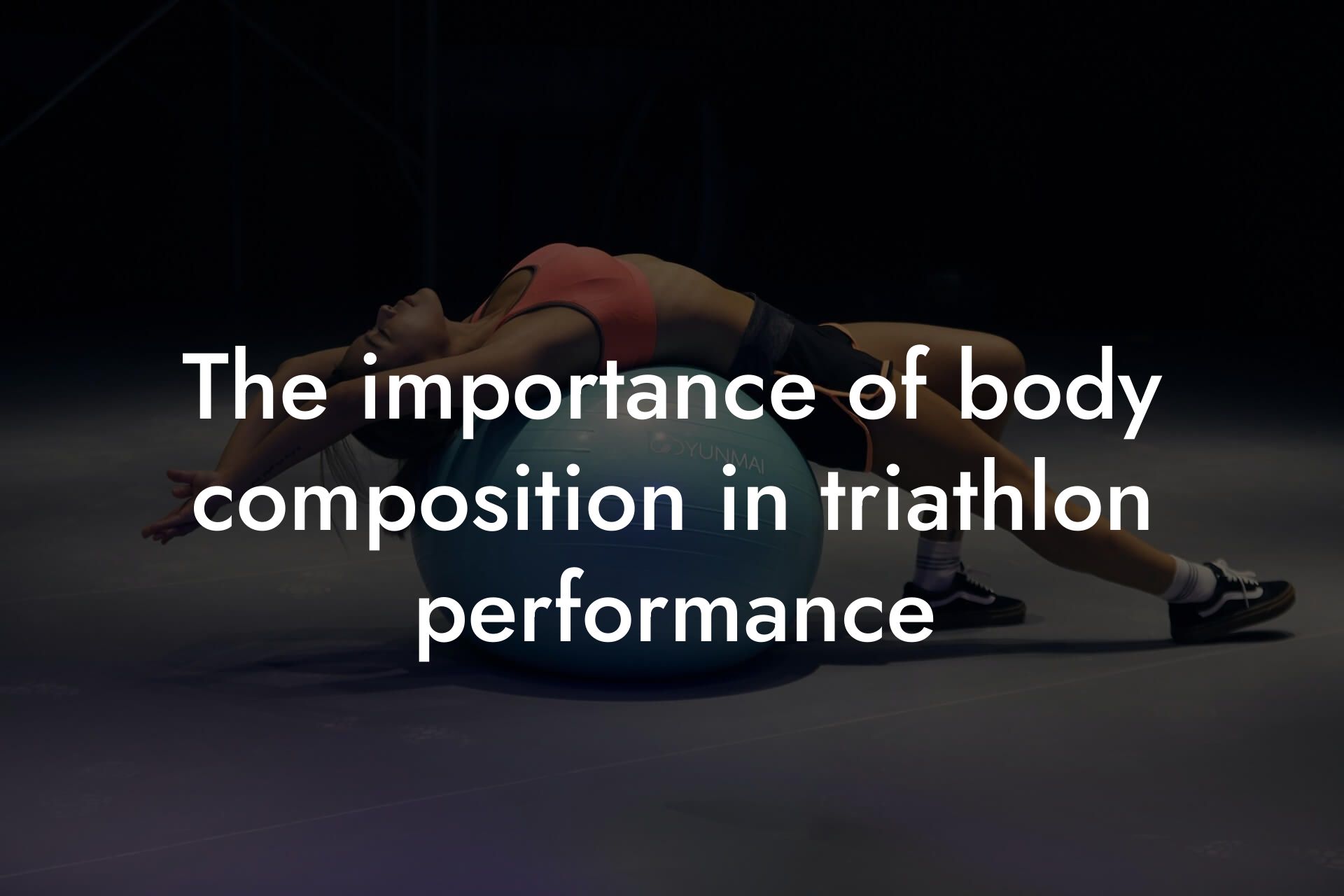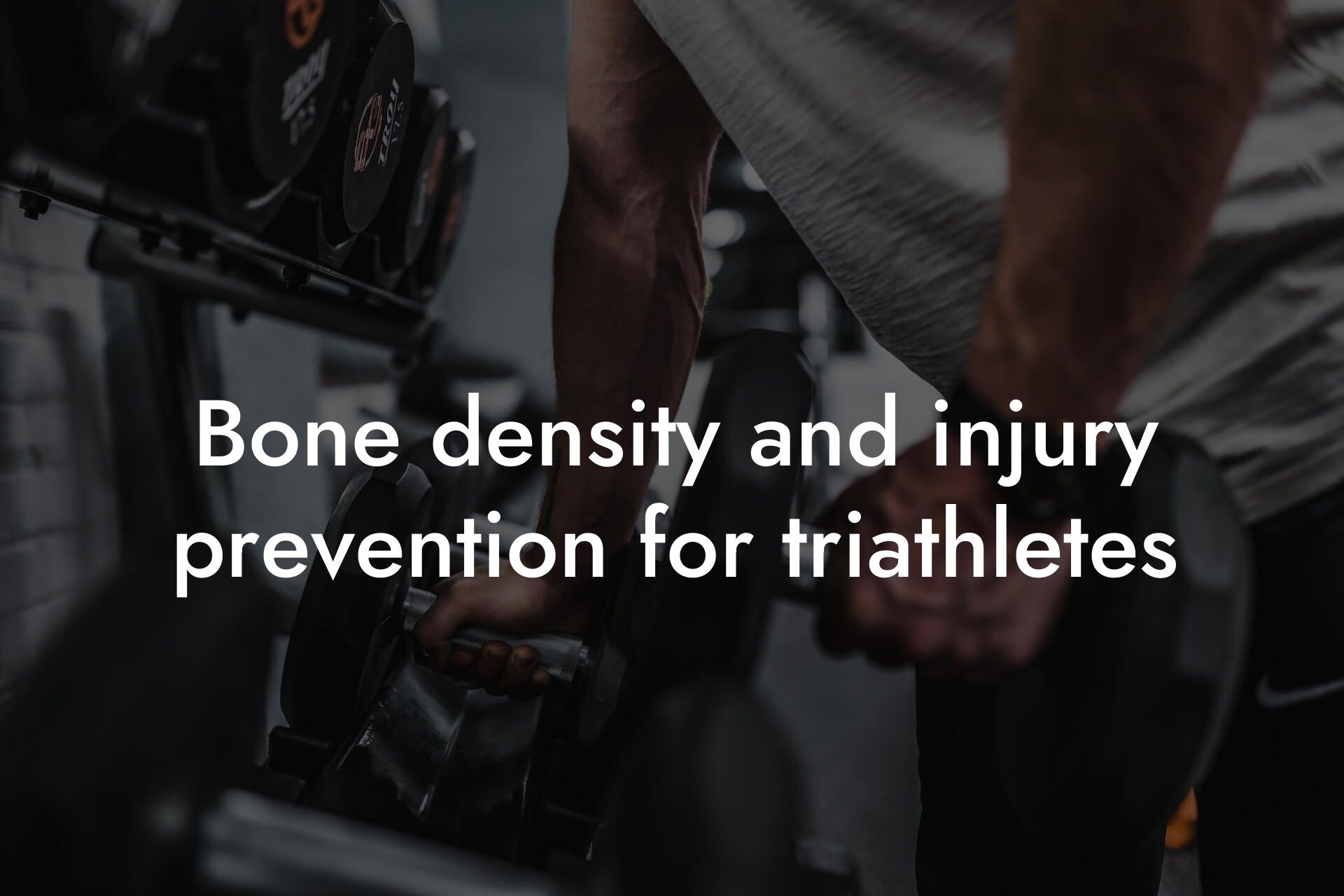As a high-earning professional, you understand the importance of physical appearance and overall health. When it comes to triathlons, having a leaner body composition can significantly impact your performance and endurance. Excess body fat can hinder your ability to perform at your best, making it essential to focus on reducing body fat to achieve better endurance in triathlons.
Table of Contents
The Impact of Body Fat on Triathlon Performance
Carrying excess body fat can negatively affect your triathlon performance in several ways. Firstly, it increases your energy expenditure, as your body has to work harder to move the extra weight. This can lead to fatigue, decreased endurance, and a slower overall pace. Additionally, excess body fat can also increase your risk of injury, particularly in the joints, which can further compromise your performance.
Furthermore, having a higher percentage of body fat can also affect your power-to-weight ratio, making it more challenging to accelerate and maintain speed during the cycling and running segments of the triathlon. A leaner body composition, on the other hand, allows for more efficient energy transfer, enabling you to perform at a higher intensity for longer periods.
Understanding Body Composition Analysis
To effectively reduce body fat, it's essential to understand your body composition. A DEXA (Dual-Energy X-ray Absorptiometry) scan provides a comprehensive analysis of your body composition, including lean mass, fat mass, and bone density. This information enables you to identify areas for improvement and track your progress over time.
A DEXA scan can help you determine your percentage of body fat, which is a critical metric for triathletes. For men, a body fat percentage of 6-13% is considered ideal, while for women, it's 16-23%. By knowing your body fat percentage, you can set realistic goals and develop a tailored plan to achieve them.
Nutrition Strategies for Reducing Body Fat
A well-structured nutrition plan is critical for reducing body fat. As a triathlete, you need to focus on consuming a balanced diet that provides adequate energy for your training while promoting fat loss. Here are some key nutrition strategies to help you achieve your goals:
1. Caloric Deficit: Create a caloric deficit by consuming fewer calories than your body burns. Aim for a daily deficit of 500-750 calories to promote weight loss while preserving lean muscle mass.
2. Macronutrient Balance: Ensure you're consuming the right balance of carbohydrates, protein, and healthy fats. Aim for a daily intake of 2-3 grams of protein per kilogram of body weight, 2-3 grams of complex carbohydrates per kilogram of body weight, and 0.5-1 gram of healthy fats per kilogram of body weight.
3. Hydration: Adequate hydration is essential for optimal performance. Aim to drink at least 8-10 glasses of water per day, and make sure to consume electrolyte-rich drinks during and after intense training sessions.
Training Strategies for Reducing Body Fat
In addition to a well-structured nutrition plan, a targeted training program can help you reduce body fat and improve endurance. Here are some key training strategies to incorporate into your routine:
1. High-Intensity Interval Training (HIIT): Incorporate HIIT sessions into your training program, which involve short bursts of high-intensity exercise followed by active recovery. This type of training promotes fat loss and improves cardiovascular fitness.
2. Strength Training: Incorporate strength training exercises into your routine, focusing on compound exercises like squats, deadlifts, and bench press. This will help you build lean muscle mass, which can further enhance your endurance.
3. Endurance Training: Gradually increase your endurance training volume and intensity to improve your cardiovascular fitness and burn more calories during exercise.
Progressive Overload and Periodization
To continue making progress and reducing body fat, it's essential to incorporate progressive overload and periodization into your training program. Progressive overload involves gradually increasing the intensity of your workouts by adding weight, reps, or sets over time. This challenges your body to adapt and promotes continued fat loss.
Periodization involves dividing your training program into specific phases, each with a unique focus. This can help you avoid plateaus and ensure continued progress towards your goals.
Mindset and Accountability
Reducing body fat and improving endurance requires a strong mindset and accountability. Here are some tips to help you stay motivated and on track:
1. Set Realistic Goals: Set specific, measurable, and achievable goals for yourself, both in terms of body composition and triathlon performance.
2. Track Your Progress: Regularly track your progress through DEXA scans, body fat percentage measurements, and performance metrics like power output and running pace.
3. Find a Support System: Surround yourself with like-minded individuals who share your goals and can provide support and motivation.
Reducing body fat is a critical component of improving endurance in triathlons. By understanding the impact of body fat on performance, incorporating a comprehensive body composition analysis, and developing a tailored nutrition and training plan, you can achieve your goals and take your triathlon performance to the next level. Remember to stay focused, motivated, and accountable, and don't hesitate to seek guidance from a qualified coach or healthcare professional if needed.
Frequently Asked Questions
What is the ideal body fat percentage for triathletes?
For triathletes, the ideal body fat percentage varies depending on the individual's goals and gender. Generally, for men, a body fat percentage between 6-13% is considered ideal, while for women, it's between 16-23%. However, it's essential to note that these are general guidelines, and the optimal body fat percentage may vary depending on factors such as age, muscle mass, and overall health.
How does body fat affect endurance in triathlons?
Excess body fat can significantly impact endurance in triathlons by increasing energy expenditure, reducing power output, and impairing thermoregulation. When you carry excess body fat, your body has to work harder to cool itself, which can lead to fatigue and decreased performance. Additionally, excess body fat can also increase your risk of injury and reduce your overall power-to-weight ratio.
What are the benefits of reducing body fat for triathletes?
Reducing body fat can have numerous benefits for triathletes, including improved endurance, increased power output, enhanced thermoregulation, and reduced risk of injury. Additionally, reducing body fat can also improve overall health and reduce the risk of chronic diseases such as diabetes and heart disease.
How can I measure my body fat percentage?
There are several ways to measure body fat percentage, including dual-energy X-ray absorptiometry (DXA), hydrostatic weighing, and skinfold measurements. However, for most individuals, a simple body fat caliper measurement can provide an accurate estimate of body fat percentage.
What is the best way to reduce body fat for triathletes?
The best way to reduce body fat for triathletes is through a combination of proper nutrition, consistent training, and patience. Focus on consuming a balanced diet that is high in protein, moderate in complex carbohydrates, and low in unhealthy fats. Additionally, incorporate strength training and high-intensity interval training into your workout routine to improve muscle mass and boost metabolism.
How long does it take to notice improvements in body fat percentage?
The time it takes to notice improvements in body fat percentage varies depending on individual factors such as starting body fat percentage, diet, and training. However, with consistent effort and patience, most individuals can expect to see noticeable improvements in body fat percentage within 6-12 weeks.
Can I reduce body fat too quickly?
Yes, it is possible to reduce body fat too quickly, which can be detrimental to overall health and performance. Rapid weight loss can lead to muscle loss, decreased metabolism, and a range of negative health consequences. Aim to lose 0.5-1% body fat per week for a sustainable and healthy approach to fat loss.
How does nutrition impact body fat percentage?
Nutrition plays a critical role in body fat percentage, with a balanced diet being essential for optimal fat loss. Focus on consuming whole, unprocessed foods such as lean proteins, complex carbohydrates, and healthy fats. Avoid sugary drinks, processed snacks, and saturated fats, which can hinder fat loss and overall health.
What is the role of carbohydrates in reducing body fat?
Carbohydrates are an essential macronutrient for triathletes, providing energy for training and competition. However, consuming excessive amounts of carbohydrates can hinder fat loss. Focus on consuming complex carbohydrates such as whole grains, fruits, and vegetables, and avoid sugary drinks and processed snacks.
How does protein impact body fat percentage?
Protein is essential for muscle growth and repair, and consuming adequate amounts can help support fat loss. Aim to consume 1.2-1.6 grams of protein per kilogram of body weight daily, spread across 3-5 main meals and 2-3 snacks.
What is the role of healthy fats in reducing body fat?
Healthy fats such as omega-3 fatty acids, avocado, and nuts are essential for overall health and can support fat loss. These fats provide energy, support hormone production, and can help reduce inflammation. Aim to consume 0.5-1 gram of healthy fats per kilogram of body weight daily.
How does hydration impact body fat percentage?
Hydration is critical for overall health and can impact body fat percentage. Aim to consume at least 8-10 glasses of water per day, and make sure to drink water during and after exercise to aid in recovery and hydration.
Can I reduce body fat through exercise alone?
While exercise is essential for overall health and fitness, it is unlikely to lead to significant fat loss without a corresponding change in nutrition. Focus on combining a balanced diet with regular exercise, including strength training, high-intensity interval training, and cardiovascular exercise.
How does strength training impact body fat percentage?
Strength training is essential for building muscle mass, which can help support fat loss. Incorporate strength training exercises 2-3 times per week, focusing on compound exercises such as squats, deadlifts, and bench press.
How does high-intensity interval training impact body fat percentage?
High-intensity interval training (HIIT) is a effective way to improve cardiovascular fitness and boost metabolism, leading to increased fat loss. Incorporate HIIT workouts 2-3 times per week, focusing on exercises such as sprints, burpees, and jump squats.
Can I reduce body fat through cardiovascular exercise alone?
While cardiovascular exercise such as running, cycling, and swimming can help improve cardiovascular fitness, it is unlikely to lead to significant fat loss without a corresponding change in nutrition. Focus on combining cardiovascular exercise with strength training and high-intensity interval training for optimal fat loss.
How does stress impact body fat percentage?
Chronic stress can lead to increased cortisol production, which can hinder fat loss and overall health. Focus on managing stress through techniques such as meditation, yoga, and deep breathing exercises.
Can I reduce body fat during the off-season?
Yes, the off-season is an ideal time to focus on reducing body fat and improving overall health. With reduced training demands, you can focus on making dietary changes and incorporating strength training and high-intensity interval training into your workout routine.
How does sleep impact body fat percentage?
Sleep is essential for overall health and can impact body fat percentage. Aim to get 7-9 hours of sleep per night, and prioritize sleep as part of your overall recovery strategy.
Can I reduce body fat with a busy schedule?
Yes, it is possible to reduce body fat with a busy schedule. Focus on making small changes to your diet and exercise routine, such as incorporating strength training exercises during lunch breaks or meal prepping on the weekends.
How does consistency impact body fat percentage?
Consistency is key when it comes to reducing body fat. Focus on making sustainable lifestyle changes that you can maintain in the long term, rather than trying fad diets or quick fixes.
Can I maintain muscle mass while reducing body fat?
Yes, it is possible to maintain muscle mass while reducing body fat. Focus on consuming adequate protein, incorporating strength training into your workout routine, and getting enough rest and recovery.
How does age impact body fat percentage?
Age can impact body fat percentage, with many individuals experiencing an increase in body fat as they age. However, with consistent effort and patience, it is possible to reduce body fat at any age.
Can I reduce body fat with a genetic predisposition to obesity?
Yes, it is possible to reduce body fat even with a genetic predisposition to obesity. Focus on making sustainable lifestyle changes, including a balanced diet and regular exercise, and consult with a healthcare professional for personalized guidance.
How does body fat impact overall health?
Excess body fat is a major risk factor for chronic diseases such as diabetes, heart disease, and certain types of cancer. Reducing body fat can improve overall health and reduce the risk of these diseases.
Here are some related articles you might love...
- The importance of body composition in triathlon performance
- Using DEXA scans to monitor triathlete health
- Bone density and injury prevention for triathletes
- Recovery techniques for triathletes after races
- Balancing training for swimming, cycling, and running
- Nutrition strategies for triathlon training and competition
- Strength training for triathletes to improve overall performance
- Off-season training strategies for triathletes
- The role of lean muscle mass in triathlon events
Zak Faulkner
Zak Faulkner is a leading authority in the realm of physical health and body composition analysis, with over 15 years of experience helping professionals optimise their fitness and well-being. As one the experts behind Tano Performance Group, Zak has dedicated his career to providing in-depth, science-backed insights that empower clients to elevate their physical performance and overall health.
With extensive knowledge of DEXA technology, Zak specializes in delivering comprehensive body assessments that offer precise data on body fat, muscle mass, bone density, and overall physique. His expertise enables individuals to make informed decisions and achieve their fitness goals with accuracy and confidence. Zak’s approach is rooted in a deep understanding of human physiology, combined with a passion for helping clients unlock their full potential through personalised strategies.
Over the years, Zak has earned a reputation for his commitment to excellence, precision, and client-focused service. His guidance is trusted by top professionals who demand the best when it comes to their health. Whether advising on fitness programs, nutritional strategies, or long-term wellness plans, Zak Faulkner’s insights are a valuable resource for anyone serious about taking their health and fitness to the next level.
At Tano Performance Group, Zak continues to lead our Content Team revolutionising how professionals approach their physical health, offering unparalleled expertise that drives real results.




